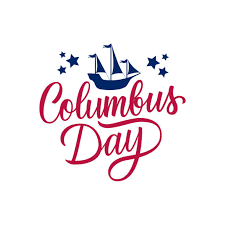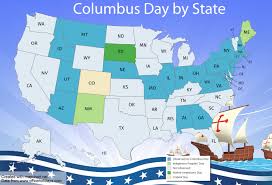1. Full-Screen Hero Section with Parallax Effect
- Background: A stunning, full-screen image of one of Columbus’s ships (like the Santa Maria) on the ocean or an antique map. Parallax scrolling can give depth, as users scroll, the ship or map moves subtly to enhance engagement.
- Overlaying Title: A bold, elegant title like “Columbus Day: Journey of Discovery” in large serif font (such as Playfair Display), with a subtitle in smaller, modern sans-serif font.
- Call-to-Action: A sleek, modern button (perhaps with a gradient effect) that invites users to “Explore the Voyage” or “Learn the History.”
- Responsive: Design should adapt fluidly to mobile and tablet, ensuring the ship or map stays visually impactful on all screens.
2. Color Palette
- Primary Colors:
- Navy Blue: Represents the ocean and sky, giving a strong, timeless look.
- Golden Bronze: Evokes an antique, historical feel—perfect for highlighting important elements or CTAs.
- Off-white/Light Beige: For a parchment-like, classic look, great for backgrounds behind text.
- Accents:
- Crimson Red: For CTAs or important links, mimicking the colors of historical flags or crests.
- Muted Greens or Browns: Subtle, earthy tones that represent natural elements and blend well with the historical theme.
3. Navigation & Layout
- Sticky Navigation Bar: A clean, fixed top navigation bar that scrolls with the user. It shrinks slightly as users move down the page for minimal distraction.
- Links: Home, History, Journey Map, Events, Blog, Contact
- On hover, links subtly change color, perhaps from navy to golden bronze.
- Mega Dropdown Menus: For pages like “History” or “Events,” offering rich content previews in dropdowns, such as image thumbnails or short descriptions.
4. Interactive Columbus Journey Map
- Dynamic World Map: An interactive map of Columbus’s voyages with clickable markers for each stop, showing:
- Dates of arrival/departure.
- Brief descriptions and images of each location.
- Lines connecting the journey, with animated ship icons moving along the routes as the user scrolls or clicks.
- Tooltips: When hovering over significant locations like the Canary Islands or Hispaniola, additional historical context pops up.
5. Timeline Section (Horizontal Scroll)
- Horizontal Scrolling Timeline: Instead of a vertical scroll, allow users to swipe or scroll horizontally through the key events of Columbus’s expeditions.
- Each point on the timeline could feature an image, date, and a brief description with smooth animations.
- Beautiful old parchment textures or sketched illustrations add depth.
6. Historical Facts with Animated Icons
- Grid of Facts: A sleek grid or masonry layout featuring significant moments of the era—ships, exploration tools, maps, and Columbus’s achievements.
- Use minimalistic, line-drawn icons that animate as users hover, adding a modern yet classy feel.
- Each fact card can flip or expand to show more in-depth information with subtle animations.
7. Blog Section with Elegant Card Layout
- Modern Card Layout: Blog articles on the significance of Columbus Day, debates, and current events are presented in card format with featured images. Use a grid or masonry design.
- Hover effects: The image fades slightly and the card lifts with a drop shadow when hovered over.
- Perfect for engaging users with up-to-date information and articles.
8. Celebration Events Section with Countdown
- Events Display: Cards showcasing local celebrations, parades, or educational activities.
- Use a sleek countdown timer leading up to Columbus Day, making the site feel timely.
- Dynamic event filters: Users can filter by date, location, or type of event.
- Map integration: Embed Google Maps for users to find the nearest events with directions.
9. Footer with Vintage Vibes
- Dark Theme Footer: A contrasting, dark navy footer with light text.
- Include social media icons styled as vintage wax seals or compass icons.
- Footer sections: Quick Links, About, Social Media, and Contact Information. Incorporate an old-world map background texture to add depth.
10. Additional Interactive Features
- Quiz or Interactive History Section: Users can test their knowledge about Columbus’s journey with a fun, visually engaging quiz. Incorporate questions related to maps, key facts, and history, with graphics.
- Video Backgrounds or Overlays: Use a subtle video loop in sections about Columbus’s exploration or the ocean, providing a living background feel without overwhelming the user.
11. Accessibility & Performance Optimization
- Ensure the design is fully accessible with high-contrast text, alt text for images, and a focus on fast load times (optimized images, lazy loading).
- The site should also be responsive, ensuring a seamless experience on desktop, tablet, and mobile devices.
Summary
This design integrates modern web trends (such as horizontal scrolling, interactive maps, and parallax effects) with a respectful, historical tone. The balance of interactive features, elegant typography, and thoughtful color choices will make the site feel both engaging and informative for all users celebrating or learning about Columbus Day.




